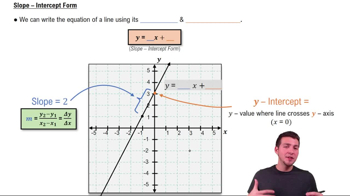27–76. Calculate the derivative of the following functions.
y = √f(x), where f is differentiable and nonnegative at x.
 Verified step by step guidance
Verified step by step guidance Verified video answer for a similar problem:
Verified video answer for a similar problem:



 5:02m
5:02mMaster Intro to the Chain Rule with a bite sized video explanation from Patrick
Start learning